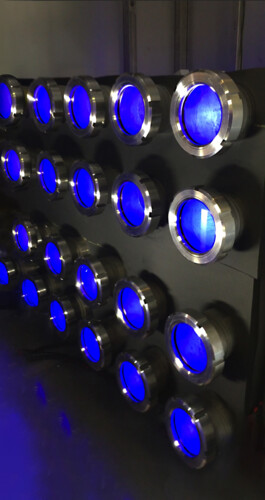STORIES IN THE MAKING
Sustainable and Cost-Effective Lactose Whitening
Lactose powder, a common ingredient in various food and pharmaceutical products, is often used for its binding and bulking properties. However, some applications such as cheese powders, milk/dairy powders, infant/baby formulas, and pharmaceuticals may require lactose powder to be whitened to meet industry and consumer standards. Whitening lactose powder involves the removal of impurities and colorants that may affect its natural white appearance. There are two popular methods for whitening lactose powders – carbon cartridges and lactose washing – but there’s also a new, innovative, more sustainable, and cost-effective solution.
Traditional Lactose Whitening Methods
- Carbon Cartridges
Activated carbon, with its high adsorption capacity, is one popular way to remove impurities and colorants from lactose. However, it does require carbon, and manufacturers are looking for ways to meet increased government regulations to reduce carbon emissions and may have a not-so-distant goal to become carbon neutral. Additionally, using carbon cartridges to whiten lactose also requires a lot of water in the process to regenerate the active carbon. - Lactose Washing
One process employed by lactose manufacturers is to whiten lactose through washing. The washing process not only uses a lot of water but also results in significant loss of lactose powder, which ends up going down the drain, reducing yield. Lactose washing processes also run on fossil fuels, not clean, renewable energy like electricity or solar, which doesn’t help a manufacturer reduce its carbon footprint.
Blue Light Technology: A Sustainable, Cost-Effective Way to Whiten Lactose

Blue light technology removes the yellow color of riboflavin to get white lactose powder. This cutting-edge solution not only offers cost savings but also promotes environmental friendliness.
- Lower Operating Costs
Blue light technology can reduce water consumption by up to 250,000 liters per day compared to processes that leverage carbon cartridges and saves even more for those manufacturers using carbon washing, significantly reducing operating costs. But there are other cost savings as well, for example, the cost of caustic acid, steam, and wastewater treatment. - Increase Yields
Blue light technology increases yields compared to lactose washing. More lactose is retained during the blue light process, whereas during the lactose washing process, valuable product is lost down the drain. - Eliminate Carbon
Blue light technology reduces your carbon footprint by eliminating the use of carbon cartridges and runs on electricity. As governments around the world introduce tighter environmental regulations, manufacturers may face legal and financial penalties for regulatory non-compliance. By reducing your carbon footprint with blue light technology, you stay one step ahead.
|
|
Blue Light Technology |
Carbon Cartridges |
Lactose Washing |
|
Doesn’t Use Carbon |
X |
|
X |
|
Uses Less Water |
X |
|
|
|
Eliminates Wastewater Treatment |
X |
|
|
|
Doesn’t Wash Lactose Down the Drain |
X |
X |
|
When it comes to whitening lactose powders, it's essential to consider both the environmental impact and the efficiency of your chosen method. The Anhydro® BlueLight Whitening System™ leverages blue light technology and offers a more sustainable, cost-effective way for manufacturers to whiten lactose powder.
Learn more about the Anhydro BlueLight Whitening System.
